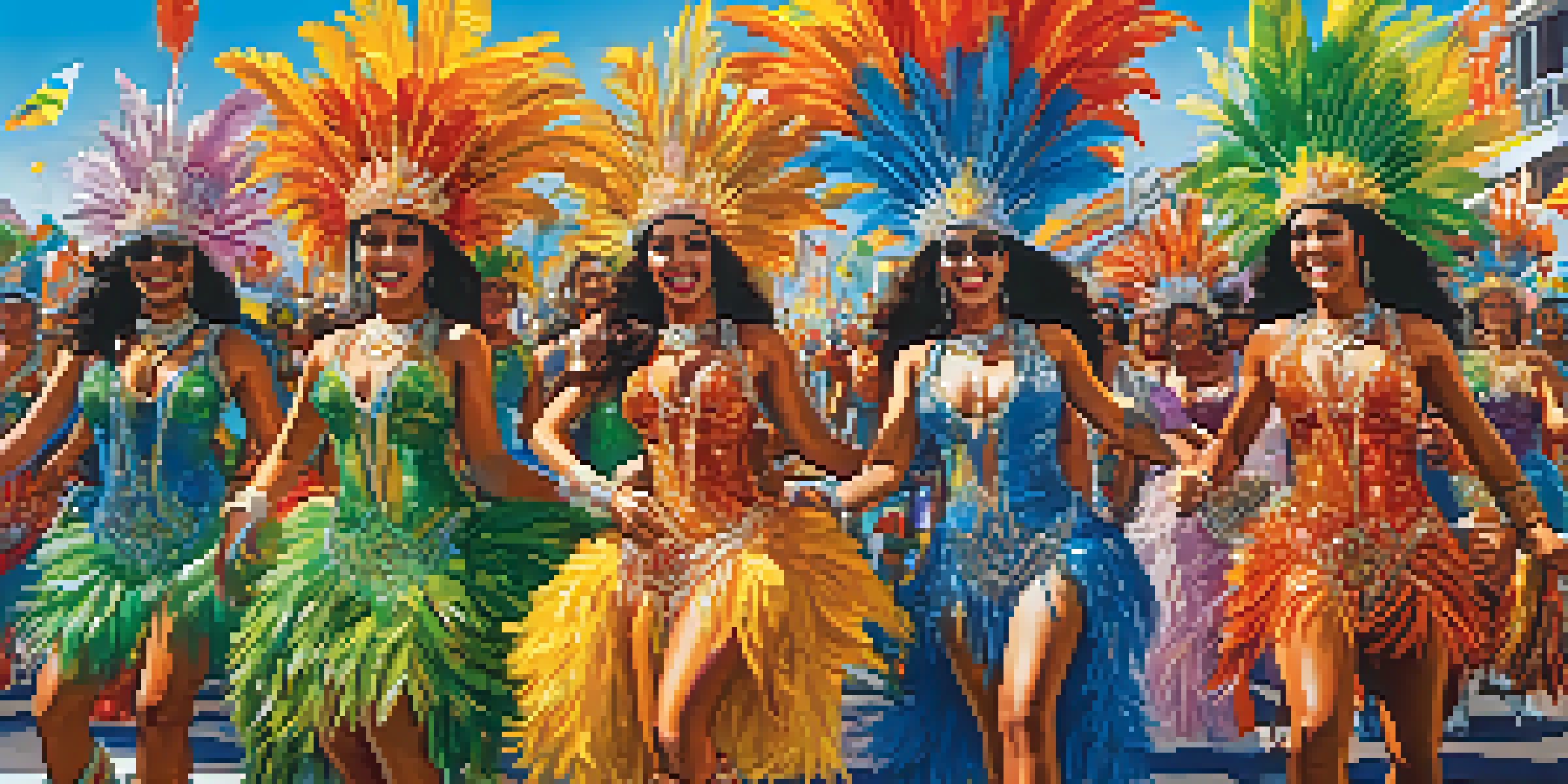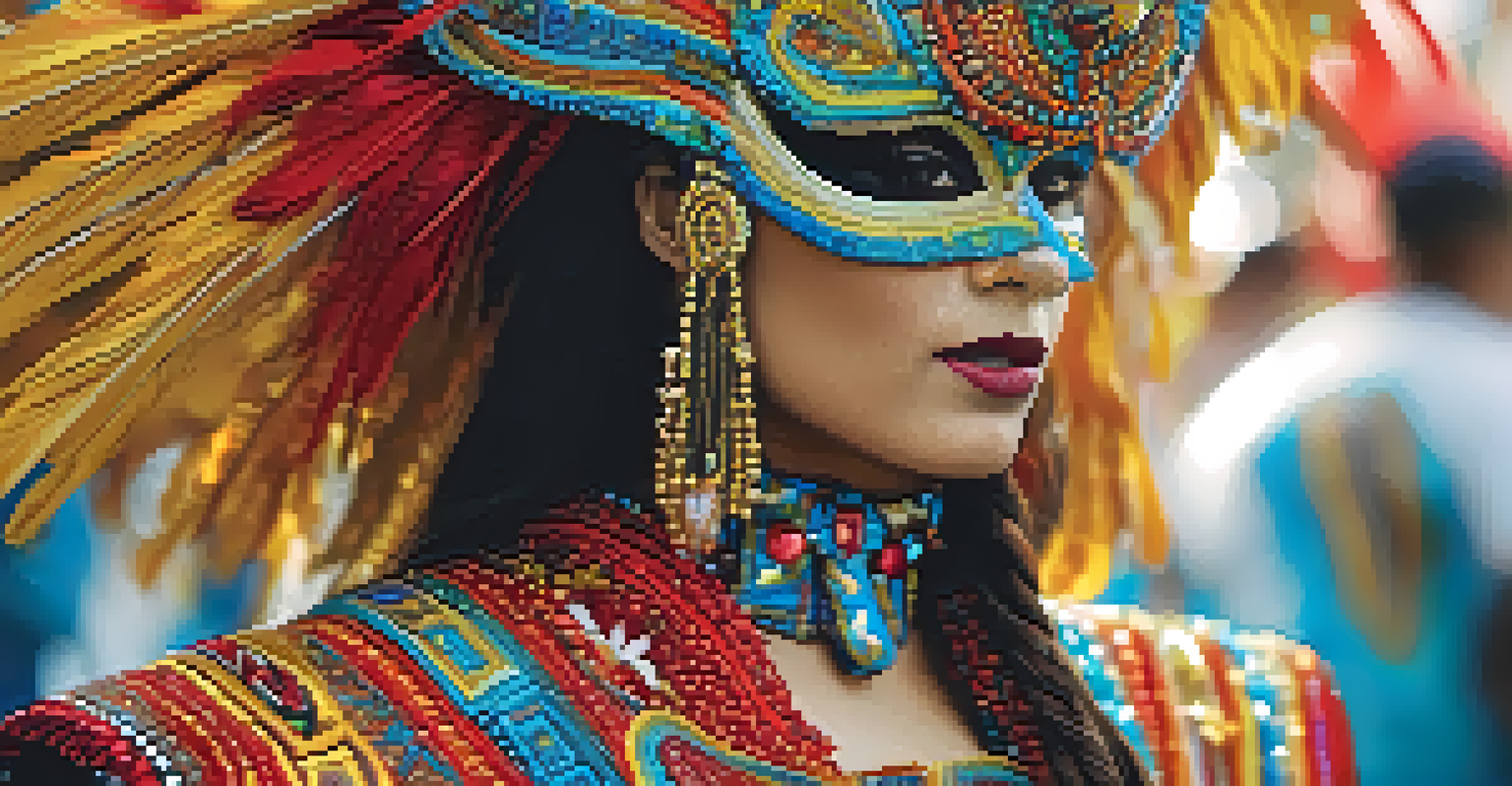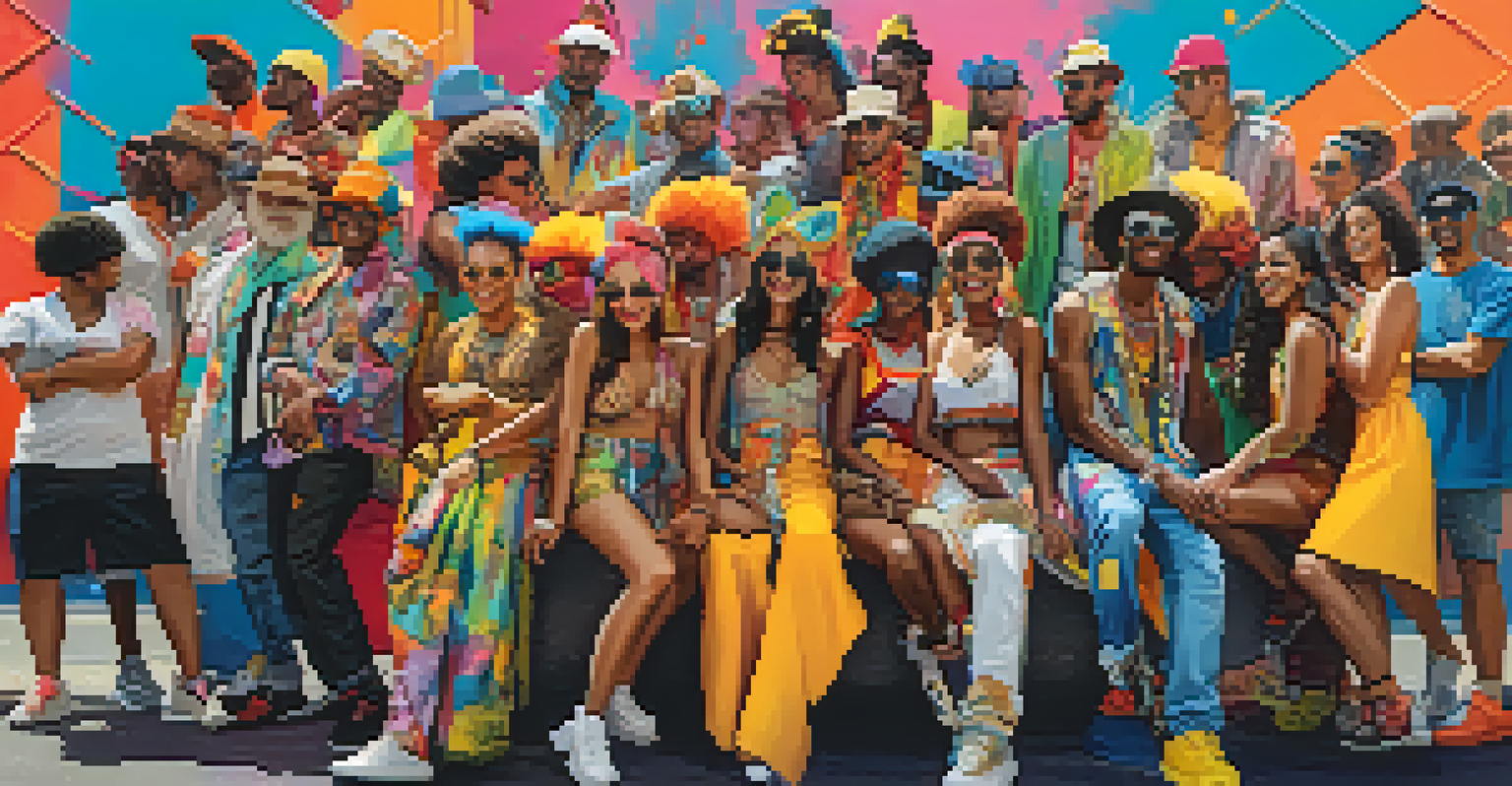The Influence of Carnival on Brazilian Fashion Trends

Carnival: The Heartbeat of Brazilian Culture
Carnival is more than just a festival in Brazil; it's a vibrant expression of the country's culture and identity. This annual celebration attracts millions, showcasing colorful parades, samba music, and, of course, stunning fashion. The spirit of Carnival embodies the rich diversity of Brazil, melding traditions from indigenous, African, and Portuguese influences.
Carnival is a time when the streets become a runway, and everyone plays a role in this theatrical display of color and flair.
During Carnival, fashion takes center stage, with elaborate costumes that often reflect historical and cultural narratives. Designers and everyday revelers alike seize this opportunity to showcase their creativity, pushing the boundaries of style and self-expression. This festival has become a canvas where fashion trends are born and evolve, making it a crucial part of Brazil's cultural fabric.
As Carnival approaches, the anticipation builds not just for the festivities but also for the fashion statements that will emerge. It’s a time when the streets become a runway, and everyone, from seasoned designers to local artisans, plays a role in this theatrical display of color and flair.
The Evolution of Carnival Costumes
Over the years, Carnival costumes have transformed significantly, reflecting the changing times and societal influences. Initially, costumes were simple and often handmade, focusing on traditional elements. However, as the festival grew in popularity, so did the complexity and creativity of the costumes, leading to a fashion revolution in Brazil.

Today, many costumes are crafted by professional designers who blend modern techniques with traditional motifs. They often incorporate vibrant colors, intricate beadwork, and eye-catching embellishments that make each outfit a unique work of art. This evolution showcases not just artistic skills but also the cultural narratives that each costume represents, telling stories of identity and heritage.
Carnival: A Cultural Showcase
Carnival in Brazil serves as a vibrant expression of the country's diverse culture, combining indigenous, African, and Portuguese influences.
This shift has led to a fascinating interplay between high fashion and street style, where what is worn during Carnival can influence everyday fashion trends throughout the year. Designers often draw inspiration from these costumes, leading to a broader acceptance of bold colors and patterns in casual wear.
Key Designers Influenced by Carnival
Several Brazilian designers have made a name for themselves by drawing inspiration from the vibrancy of Carnival. For instance, renowned designer Alexandre Herchcovitch has often used elements of the festival in his collections, celebrating Brazil's cultural richness. His work exemplifies how Carnival serves as a springboard for innovation in fashion.
Fashion is the armor to survive the reality of everyday life.
Similarly, fashion houses like Rosa Chá and Lenny Niemeyer have incorporated the energetic spirit of Carnival into their lines. Their collections often feature bold prints and playful silhouettes that reflect the carefree essence of the festival. This embrace of Carnival aesthetics not only elevates their designs but also connects them to a larger narrative of Brazilian culture.
These designers highlight how Carnival continues to inspire both local and international fashion scenes, proving that the festival's influence extends far beyond the streets of Rio de Janeiro. By infusing a sense of celebration and authenticity into their work, they keep the spirit of Carnival alive in the fashion world.
Street Style: A Carnival Influence
The influence of Carnival extends beyond the parade floats and designer runways; it seeps into everyday street style across Brazil. During the festivities, many people opt for colorful, expressive outfits that reflect the joyous atmosphere of Carnival, making it a time of fashion experimentation. This trend often persists long after the celebrations end.
Street style enthusiasts embrace the bold colors, sequins, and playful patterns typically seen during Carnival, incorporating them into their daily wardrobes. This blend of festive fashion with everyday attire epitomizes the Brazilian spirit of creativity and self-expression. It encourages individuals to break free from conventional fashion norms and celebrate their unique styles.
Fashion's Evolution at Carnival
The festival has transformed costume design over the years, blending traditional elements with modern creativity, leading to a unique fashion revolution.
Moreover, social media platforms have amplified this trend, with influencers and everyday users alike sharing their Carnival-inspired looks. This has created a ripple effect, where street style continues to evolve, revealing the lasting impact of Carnival on Brazilian fashion.
Cultural Significance of Carnival Fashion
The fashion showcased during Carnival is not merely for aesthetic appeal; it holds deep cultural significance. Each costume often represents a particular theme or story that resonates with various communities across Brazil. This narrative aspect of Carnival fashion fosters a sense of belonging and pride among participants.
Moreover, the costumes serve as a means of commentary on social issues, allowing designers and wearers to express their views creatively. For instance, many costumes address themes of identity, heritage, and even political statements, making Carnival a platform for dialogue and reflection. This adds layers of meaning to the vibrant aesthetics of the festival.
Through this lens, Carnival becomes a powerful medium for cultural expression and social change, with fashion acting as a vehicle for communicating these messages. This interplay between art, culture, and politics illustrates the profound impact that Carnival fashion has on Brazilian society.
Sustainability in Carnival Fashion
In recent years, there has been a growing awareness of the need for sustainability within the fashion industry, and Carnival is no exception. Many designers and participants are now prioritizing eco-friendly materials and practices in their costume creation. This shift reflects a broader trend towards conscientious consumption and environmental responsibility.
For example, some designers are experimenting with upcycled materials, transforming discarded fabrics into stunning costumes that celebrate creativity while minimizing waste. This not only reduces the environmental impact but also inspires others to rethink their fashion choices during the festival and beyond.
Global Impact of Carnival Aesthetics
Carnival fashion has transcended borders, inspiring international designers and enriching the global fashion narrative with its vibrant aesthetics.
This focus on sustainability showcases how Carnival can adapt to contemporary challenges while maintaining its vibrant spirit. By marrying tradition with innovation, the festival continues to inspire a new generation of fashion enthusiasts who value both style and sustainability.
The Global Influence of Carnival Fashion
The influence of Carnival fashion has transcended Brazil's borders, captivating the global fashion scene. Designers and brands worldwide are increasingly looking to Brazilian Carnival for inspiration, recognizing the unique blend of tradition, color, and innovation it offers. This cross-cultural exchange enriches the global fashion narrative.
Fashion weeks in major cities often feature elements inspired by Carnival, showcasing the festival's enduring impact. The exuberance and creativity of Carnival costumes resonate with audiences beyond Brazil, inviting them to explore the vibrant aesthetics that define this cultural phenomenon.

This global interest not only highlights the richness of Brazilian culture but also promotes inclusivity within the fashion world. As Carnival continues to inspire international designers, it reinforces the idea that fashion is a universal language, capable of bridging cultures and communities.